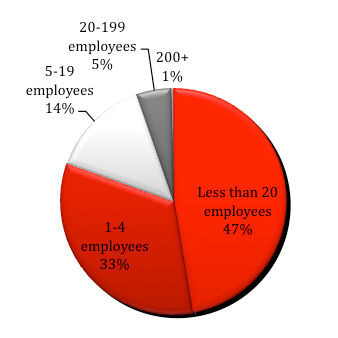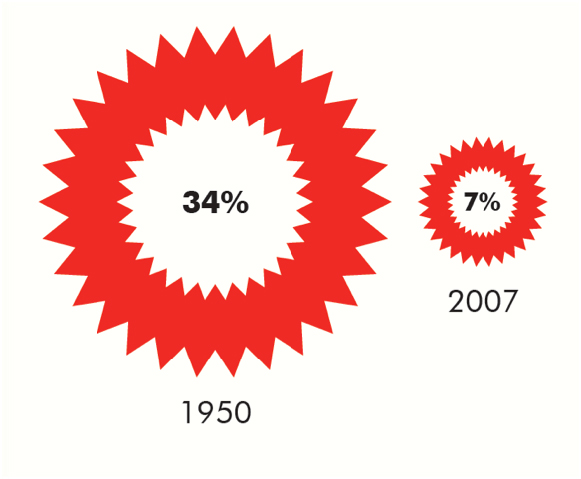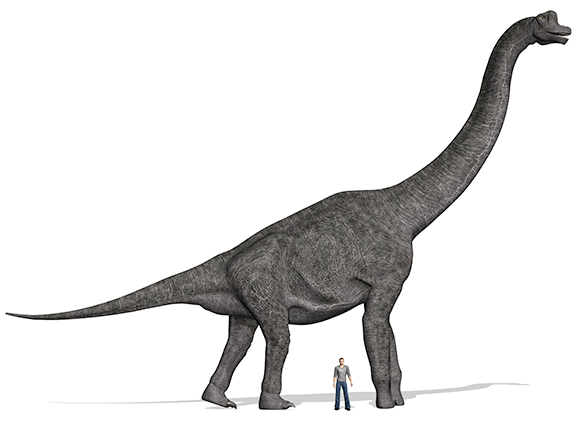What makes mid-sized businesses more profitable than big?
So what is a mid-sized business?
GE Capital has been defining the mid market in Australia as businesses that have annual revenues of between A$10 million and A$250 million. Average firm turnover is about A$41 million. Despite comprising just 1.4% of companies by number, mid-market firms provide one in four full-time jobs and contribute A$425 billion annually to the economy.
The federal Department of Innovation, Industry, Science and Research, which has a broader definition of medium-sized businesses as those with between 20 and 199 employees, puts the economic contribution of the mid-market considerably higher.
The mid-market campaign we successfully managed over four years for IBM targeted businesses from 99 and right up to 999, the large corporate and government sectors that IBM traditionally owned really kick in around 1,000 staff.

Australian Business
Most mangers still hold the belief big means better. We hold a belief businesses can only succeed today by being nimble. The reason for this is the profound change the Internet has brought to our lives. The world even quite recently was quite slow to change, and most businesses were relatively simple. Today we all compete in a world of rapid paced change and increasing complexity. So the old big business model of slowly and effectively finding savings from gradual improvements to products and services and small efficiency gains in management and procurement are no longer enough to stay competitive. Let alone stay in business.
The evidence for the decline in profitability of big business is seen in this chart. It shows one third of market leaders in their category in 1950 were also the most profitable businesses in their category, whereas today being big almost guarantees you’ll be struggling to make a buck.
Market leaders that are also category profit leaders:

What makes big business vulnerable to challenger brands
George Shinkle is a Lecturer in the School of Strategy and Entrepreneurship at the Australian School of Business. He has been studying why big business is failing.
“Organisations grow large by becoming more efficient, so when you’re really focusing on efficiency you typically become less and less flexible. The rules and processes and procedures become more and more about keeping you efficient, constraining your ability to be flexible,” he says.
“If you talk to the CEO of a very large firm, they don’t feel as if they’ve got direct control of what the organisation’s really doing. They give guidance and they set policy but the organisation has some variance on how well they follow those things,” says Shinkle.
The learning you can take advantage of is that managers in large companies try to hide from change. Which is why, if you’re running a mid-market business, you will create your own advantage by actively seeking out things to change to differentiate from the competition.
Not too big, not too small, mid-sized business is just right
Big business is still obsessed with conformity, groupthink and doing things the way they have always been done around here. Small businesses may be the birthplace of great ideas, but they usually don’t have the scale or resources to commercialise those insights.
The mid-sized business is perfectly placed in the middle, where the distance between innovative thinkers and management that can actually make decisions is short. Unlike small business, resources aren’t so slim ideas can’t be trialled without damaging the existing business of running the business.
At a CEO Institute meeting Susan Lenehan told me the biggest frustration of the CEOs of Australian arms of global businesses she mentors is their total lack of autonomy. They are prescribed what to do by head office irrespective of local circumstances. In her words, it’s the pinnacle of the “bully culture” of big business management.
Challenger brands will prosper by taking risks
This is the great opportunity mid-sized Australian businesses are exploiting, they can leverage their ability to try changes, while the big guys are stuck in the inertia of business as usual, with its five year plans, annual targets and quarterly reporting. By challenging traditional big brands, Australians can be globally competitive in a world that is changing daily.
The real successes come from maximising returns by minimising the risks of change – we developed the challenger brand formula for growth for this very reason.




Scan the QR code for our contact details.
Download the Neoreader app.
© COPYRIGHT 2013 UNO marcomms Privacy